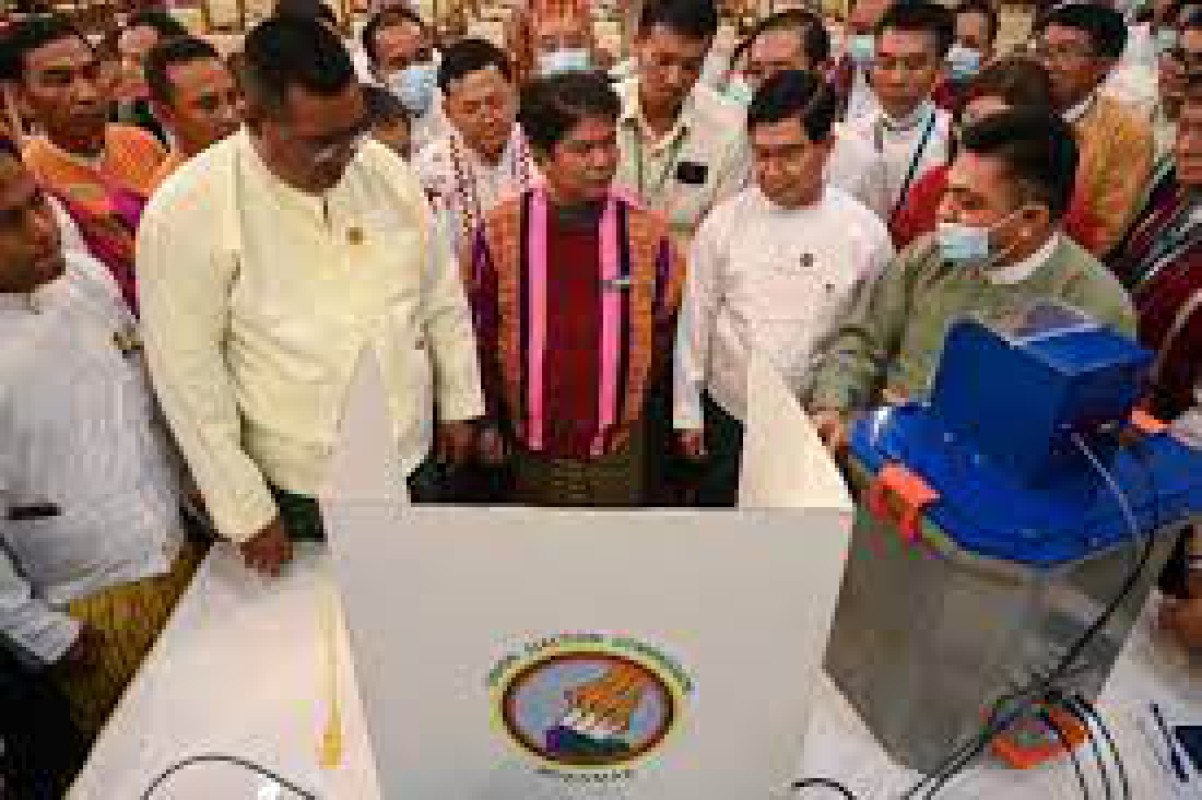Three scenarios for Myanmar's post-election government formation

616

Thet Swe (NP News) - Oct 27
Myanmar is set for a pivotal three-phase general election starting on December 28, 2025, which will reshape its political landscape for the 2026-2031 term. While there is no change in non-contesting 25% seats, the structure of the new Hluttaws (Parliament) presents a unique starting point: with 65 contesting seats vacant from the outset, elections will be held for only 433 of the 498 total elected MP positions.
In 2026, the Pyidaungsu Hluttaw will convene with a total of 599 Members of Parliament. This will be a combined assembly of the elected Pyithu Hluttaw and Amyotha Hluttaw, as well as 166 Tatmadaw-appointed MPs who hold 25% of the total seats.
The most fundamental question is: which party can secure the 300 seats needed to form a government?"
The two-party race for a majority
With a simple majority threshold of 300 seats among 599 available ones, the math is clear: only parties contesting a sufficient number of seats can realistically aim for a solo victory. This has effectively created a two-horse race.
• Union Solidarity and Development Party (USDP): The strongest contender, competing for 421 of the 433 available seats.
• People's Pioneer Party (PPP): The only other party with a mathematical path to a majority, contesting with 338 candidates.
Other significant parties, including the National Unity Party with 293 candidates, the White Tiger Party (235), the People's Party (225) and the Myanmar Farmers Development Party (180), can be mathematically excluded from a solo victory before a single vote is cast. Their role, including independents, will likely be as potential coalition partners or minor players.
Three scenarios for Myanmar's New Government
Based on the electoral math, three primary scenarios emerge for the formation of the post-2026 Myanmar government.
Scenario 1 : A USDP Solo Government
For the USDP to secure a majority without allies, it must win at least 71% of the seats it contests. This would represent a decisive landslide victory, granting them a clear mandate and the ability to form a government independently, even without leveraging the Tatmadaw's support.
Scenario 2: A PPP Solo Government
The path for a PPP-only government is significantly steeper. To reach the 300-seat threshold, they would need to win a staggering 89% of their contesting seats— a "super landslide" that is typically very difficult to achieve.
Scenario 3 : A Coalition Government
One alternative outcome, given the high victory thresholds for solo wins, is a coalition government. While Myanmar's system is presidential and not built on formal parliamentary coalitions, power-sharing arrangements could be negotiated behind the scenes. But elected President, who is vested with the most powers will head the government, and it is impossible to explicitly describe how the executive powers will be shared.
If there is no single majority winner in the upcoming election, the coalition government is a probable outcome. This scenario branches into three likely sub-categories:
• Scenario 3A : USDP-led coalition.
The USDP partners with the Tatmadaw MPs, forming a dominant alliance that can surpass 300 seats. A USDP leader becomes President.
• Scenario 3B : Tatmadaw-led coalition.
In a situation where the USDP's seats are less than 166 (Tatmadaw's non-electing seats), the Tatmadaw will become the de facto majority holder and it will form a coalition with the USDP, resulting in a Vice President appointed by the military assuming the Presidency.
• Scenario 3C : PPP-led coalition.
The PPP may build a coalition of the rest, uniting with other parties, including the USDP. A PPP leader would lead this government.
In conclusion, with 33% chance each to the respective scenario and the remaining 1% allotted to the strongest, the USDP stands at the top with 34% chance of winning this election, and the PPP-led outcome at the second with 33% while the Tatmadaw and other political parties equally have 33% chance to participate in a coalition government. This is the earliest forecast based on current data available and it shows that the victory probabilities are closely matched among players. However, as the saying goes, "the proof of the pudding is in the eating". The final result will ultimately be determined by the will of the voters on election days.